Ursa Major contains seven Messier objects. They are:
- Messier 40 (Winnecke 4)
- Bode’s Galaxy (Messier 81)
- The Cigar Galaxy (Messier 82)
- The Owl Nebula (Messier 97)
- The Pinwheel Galaxy (Messier 101)
- Messier 108
- Messier 109
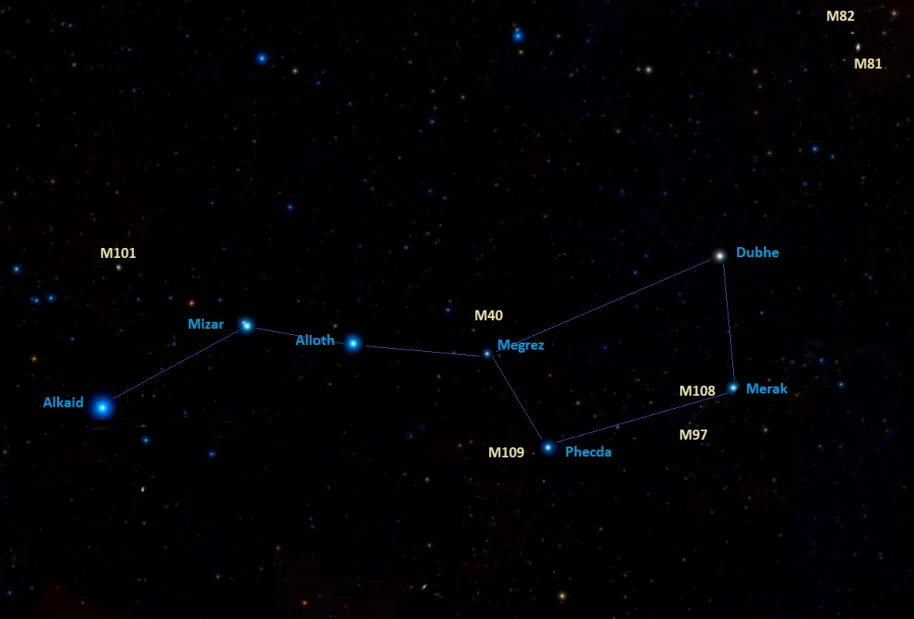
One of these – Messier 40 – is not a deep sky object but a double star, catalogued by Messier by mistake. Out of the remaining six objects, one is a planetary nebula (M97), while the others are galaxies. All seven objects can be found using the bright stars of the Big Dipper.
Messier 40
Messier 40 is a double star that appears 1.5 degrees northeast of Megrez, the star at the base of Ursa Major’s tail. It can be found by first star-hopping from Megrez to 70 Ursae Majoris, a magnitude 5.54 orange giant. 70 UMa is the only visible star in the area just northeast of Megrez. M40 lies only 17 arcminutes northeast of 70 UMa. Several galaxies appear in the same field of view.
M40 consists of two stars that are not physically related. Catalogued as HD 238107 and HD 238108, the stars lie at different distances and form an optical double. HD 238107 lies about 1,142 light years away, while HD 238108 is much closer to us at 457 light years. Both stars are invisible to the naked eye. The more distant star appears brighter, with an apparent magnitude of 9.64, while the fainter visual companion shines at magnitude 10.11. The stars can be seen in binoculars and small telescopes. HD 238107 is an orange giant and HD 238108, a yellow main sequence star.
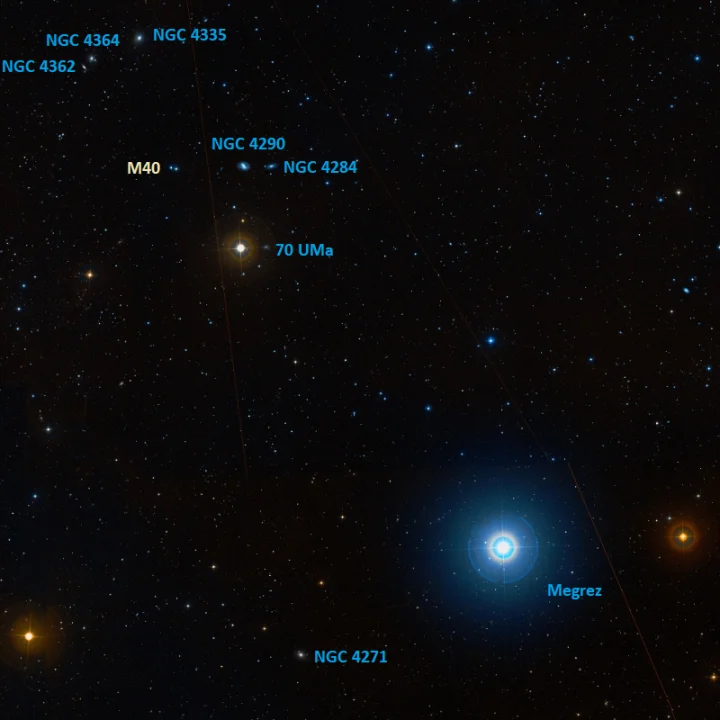
Messier 81 and Messier 82
Bode’s Galaxy (Messier 81) and the Cigar Galaxy (Messier 82) are a bright pair of interacting galaxies appearing northwest of the Big Dipper. The galaxies are a popular target for backyard telescopes. Bode’s Galaxy appears larger and brighter because we see it face-on. The galaxy has an apparent magnitude of 6.94 and lies about 12 million light years away. It stretches across an area of 26.9 by 14.1 arcminutes of the apparent sky and has a physical diameter of 90,000 light years.
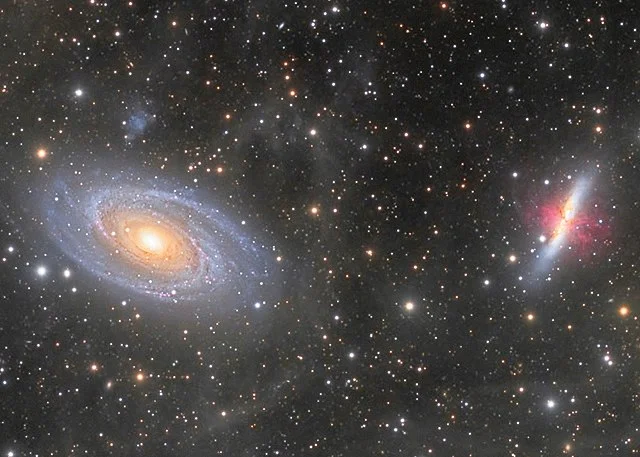
The Cigar Galaxy is a starburst galaxy seen edge-on. It has an angular size of 11.2 by 4.3 arcminutes and an apparent magnitude of 8.41. Located at an approximate distance of 12 million light years, M82 is the nearest starburst galaxy to the Sun. The burst of star formation is believed to have been triggered by the interaction with M81.
M81 and M82 can be found by extending an imaginary line from Phecda through Dubhe by about the same distance as that between the two stars. The galaxies lie about 10 degrees northwest of Dubhe.
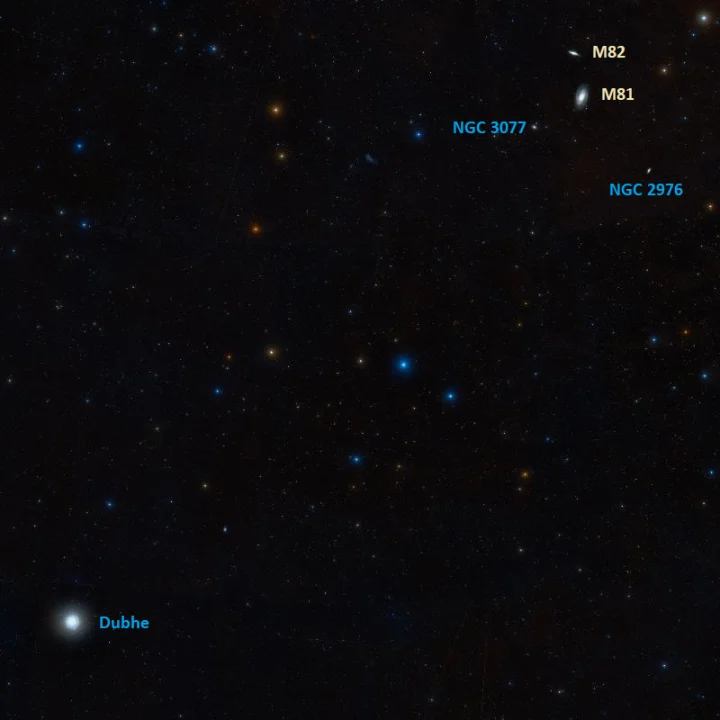
Messier 101
The Pinwheel Galaxy (Messier 101) is very easy to find. The large face-on spiral galaxy forms a triangle with Alkaid and Mizar, the stars at the end of the Great Bear’s tail. M101 appears at an angular separation of 5.5 degrees from both stars.
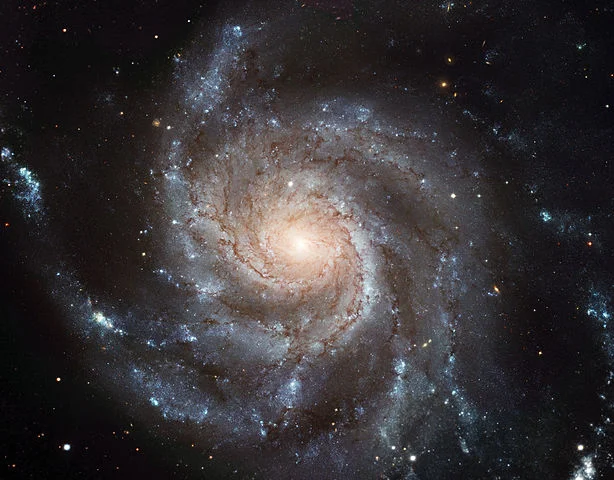
The Pinwheel Galaxy has an apparent magnitude of 7.86 and an angular size of 28.8 by 26.9 arcminutes. It lies about 20.9 million light years away. The galaxy has a linear diameter of 170,000 light years and is home to about a trillion stars. It is the brightest member of the M101 Group, a loose group of galaxies that also includes the spirals NGC 5204, NGC 5474, and NGC 5477. Like the M81/M82 pair, M101 is a fairly easy target for amateur telescopes.
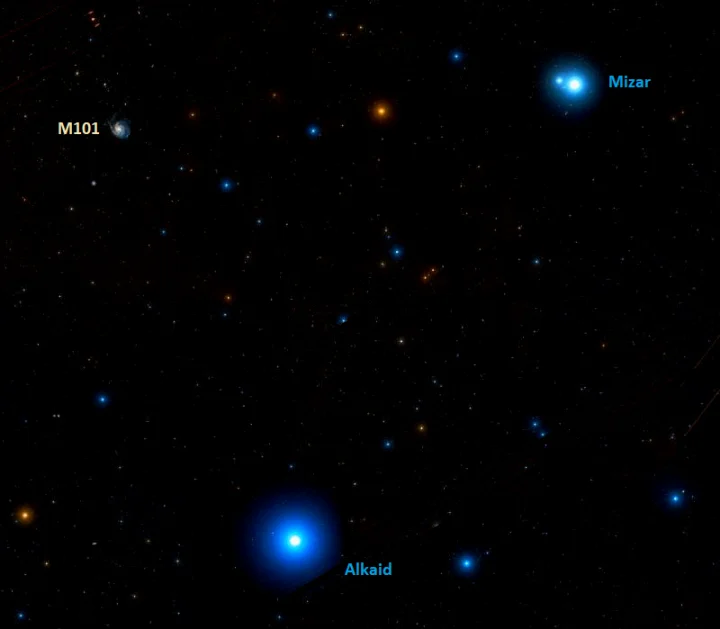
Messier 97 and Messier 108
The Owl Nebula (Messier 97) and Messier 108 can be found near Merak, the star at the southwest corner of the Big Dipper’s bowl. Both objects appear just south of the imaginary line connecting Merak and Phecda. They are separated by only 50 arcminutes and appear in the same wide field of view. The Owl Nebula lies 2.5 degrees southeast of Merak, while the M108 galaxy is a little closer to the star, at a separation of 1.5 degrees.
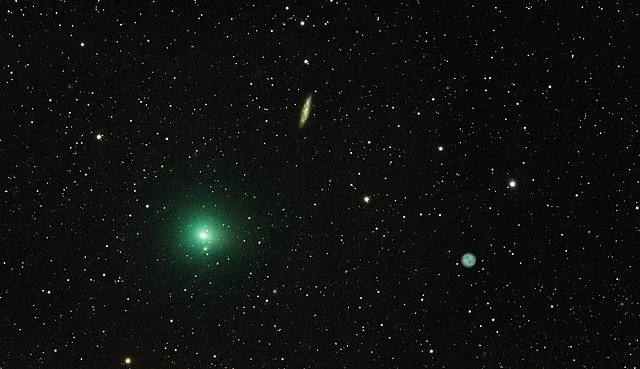
The Owl Nebula is a bright (mag. 9.9) planetary nebula over 2,000 light years away. It has an apparent size of 3.4 by 3.3 arcminutes. It can be seen in small telescopes in exceptionally good conditions, but to see the Owl’s eyes, a 10-inch or larger telescope is required.
The neighbouring M108 is a barred spiral galaxy about 45.9 million light years away. It has an apparent size of 8.7 by 2.2 arcminutes and appears almost edge-on.
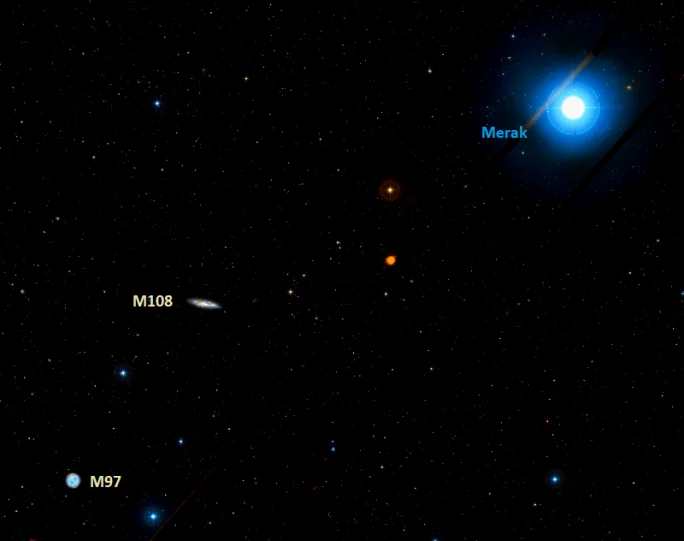
Messier 109
Messier 109 is another barred spiral galaxy on Messier’s list. It lies approximately 83.5 million light years away. The galaxy has an apparent magnitude of 10.6 and an apparent size of 7.6 by 4.7 arcminutes. It is the brightest member of the M109 Group, a large group of galaxies also known as the Ursa Major Cloud, that contains more than 50 members.
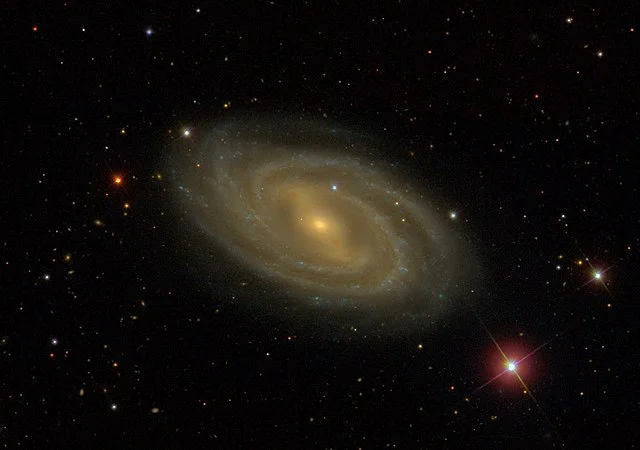
M109 is very easy to find because it appears just southeast of Phecda, one of the inner stars of the Big Dipper’s bowl. The galaxy and the star are separated by only 40 arcminutes.
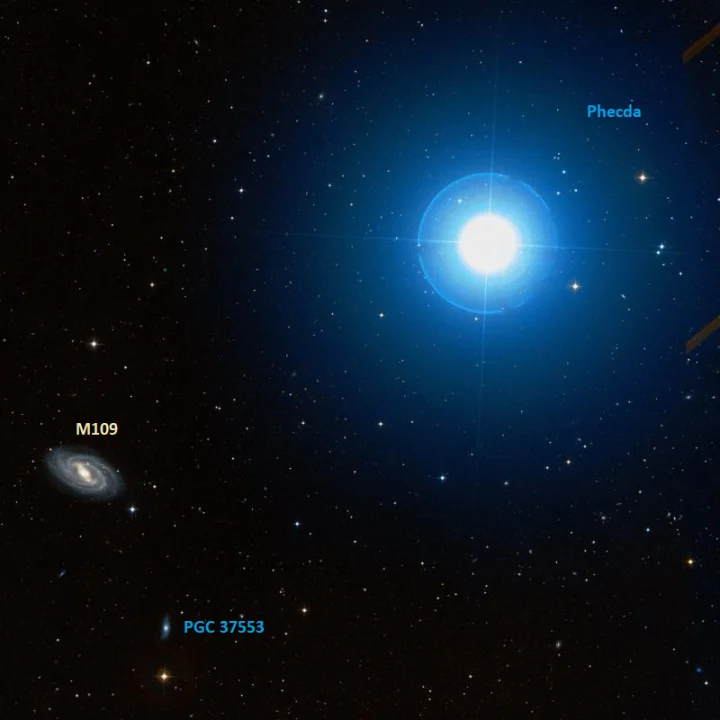
The Messier objects in Ursa Major can be seen year-round in the northern hemisphere. The best time of the year to observe them is during the spring months, when the constellation reaches its highest point in the evening sky.